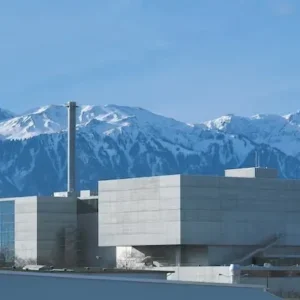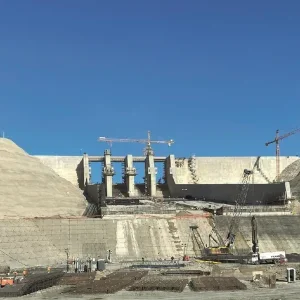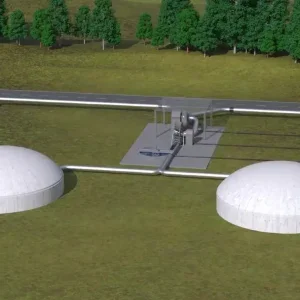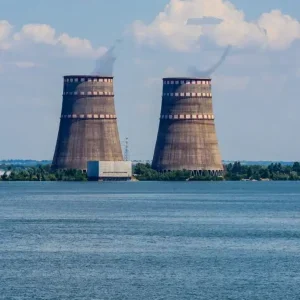
Located in arguably the most innovative square mile in world business in Cambridge, Massachusetts, US – home to technology pioneers including Google, Microsoft and Apple – Shell TechWorks (STW) pools the expertise of entrepreneurs and technology start-ups from outside theoil and gas industry.
Established in 2013, Royal Dutch Shell’s R&D hub unites the global aerospace, defence, robotics and underwater exploration sectors in a common cause: to deliver disruptive technologies that maximise revenues in offshore environments where reliability, automation and safety are intrinsic to success.
It was here that Jonathan Crane, the Anglo-Dutch giant’s vice-president of wells technology deployment and service, and engineers from Microsoft, Apple and Draper Laboratory, among others, first set out to automate the process of running the drill string in and out of the wellbore, known as pipe tripping.
"Five years ago, Shell brought in teams from disparate parts of the business to develop a computing capability on the rig that allowed us to automate directional drilling," he says. "To date, we’ve drilled more than 250,000ft fully autonomously, and so we looked at automating other key processes such as well and mud system control, blowout-preventer testing and the tripping of the drill pipe.
"I was working alongside Draper Laboratory in a different area, and Shell’s R&D team was looking to set up an innovation centre in Boston – serendipity meant we all met around the same time, and one of the first projects we decided to throw into the mix was the idea of automated pipe-sensing [APS].
"Shell’s Projects and Technology Wells [PTW] team and STW collaborate to develop automation technologies with the potential to facilitate safer and more consistent rig functionality," adds Ed Minasian, product development manager at STW. "The APS programme was a direct response to the need to automate the pipe-connection process, during which workers come into direct contact with the pipe during connection and disconnection while tripping pipe in or out of a well borehole.
"STW provided programme management, mechanical, software, systems and electrical engineering resources, and field and test verification engineering. PTW supplied the subject experts, and ensured the technical team developed the proper requirements and obtained relevant feedback."
The 1,000kg question
In under 18 months, the fruits of the joint project, a pipe-tripping solution that combines vision sensor technology inspired by the Xbox One console with complex algorithms, is market-ready, having undergone exhaustive field testing at Shell’s Rijswijk E&P facility in the Netherlands.
"When Shell drills a well, we run a drill bit with measurement systems behind it into the borehole in 90ft lengths of pipe," explains Crane. "We then screw those pipes together – imagine you are trying to screw a bolt into a nut, except each bolt weighs about 1,000kg – and then line the borewall of the pipe with casing, before drilling another section.
"What you end up with resembles a car aerial, with ever-decreasing cylinders going into the ground. Every time you run casing, the drill pipe has to be taken out of the ground and then rerun back in again. Shell carries out this pipe-tripping process more than a million times every year."
Pipe tripping remains a manual task controlled by a driller with a joystick and workers on the drill floor, resulting in potential hazards for personnel, and a marked variance in speed and efficiency.
"In one sense, pipe tripping is a key process, yet it is not particularly well controlled," Crane admits. "One of the bottlenecks in screwing the pipe together is the final moment of location when the nut and the bolt come together. Mechanised systems require either a human being to actually go in and physically push on it, or the operator to take back manual control and nudge it into position by eye.
"Connecting the pipe sections can therefore take anywhere between six and 18 minutes, depending on the specific crew and individual ways of working. Now, a deepwater oil and gas rig costs about $10 a second to operate, so you can see that if you reduce that six-to-18-minute time spread – even by a small amount – you rapidly start to improve your cost-efficiency as a business.
"The industry response has been to employ micro KPIs, where you measure workflows and coach crews on performance. That works up to a point but, as soon as you take the emphasis off, the stats return to what they were. So, instead, we thought, ‘How can we automate the entire process?’"
Kinect the dots
Existing automated pipe-tripping technology struggles to place the drill pipe precisely on a consistent basis, meaning that drilling operations are continually interrupted while machinery is recalibrated.
Shell’s APS system solves this problem using a vision sensor inspired by the Kinect technology found in Microsoft’s Xbox One console. Kinect combines an RGB camera containing a depth sensor and infrared projector with a monochrome complementary metal-oxide-semiconductor (CMOS) sensor that sees the environment not as a flat image but as dots arranged in a 3D environment.
This sensor, when combined with a set of complex algorithms, enables a computer system to reliably locate the pin of one pipe directly above the box of another. The APS can identify exactly where the pin is in relation to the box in real time, allowing accurate, repeatable automation of the tripping process.
"The APS uses vision systems and software to view and interpret the position of the ‘tool joint ends’, and provides a confirmation indicator when the two pipe ends are connected," explains Minasian.
"Our mantra was to operate in the rapid process space, so we married industrial position-sensing equipment with off-the-shelf software from the open-source market, not somewhere we’d expected to find a solution," adds Crane. "We paid for Microsoft’s Kinect, but also used relatively cheap time-of-flight and security CCTV cameras that work effectively day and night in varying weather conditions on the drill floor. Together, the two technologies appear to have solved the pipe-tripping problem."
Shell believes the new APS innovation will help to boost operational efficiency, reduce costs and equipment degradation, and improve personnel safety by removing employees from hazardous environments.
"Shell defines the drill floor as a high-risk zone," says Crane. "I’ve worked in that type of role, so a strong personal driver for me is to get our people out of there. The APS technology has the potential to remove people from the line of fire, as well as improve efficiency, and limit wear and tear on equipment.
"Initial testing consisted of building a mini drill-pipe-connecting prototype in Boston before trying it out on a test rig in our large laboratory centre in Rijswijk in the Netherlands to see how it performed in different weather conditions and in close proximity to people.
"This small-scale saturation testing enabled us to harness a multitude of statistical data related to how well the APS operates – we needed to be sure that it can survive in the real world and perform at a consistently high level of accuracy," Crane continues.
"Shell doesn’t usually build this type of equipment, preferring instead to employ contractors, but in the case of the APS, we are looking to commercialise the technology. We have acted as a catalyst in this process in order to address a space where the industry as a whole has struggled."
The new age of drilling
The APS data is communicated to a central repository using Shell’s bespoke WellVantage software, which sends real-time information from the drilling site. Field workers converse with drilling experts remotely via video streaming on mobile devices to monitor safety and give advice, as Crane explains.
"We gather the information, much of it geo-science data, centrally to enable us to analyse it flexibly, for the simple reason that it’s easier to have that information in data centres in major cities than to expect the best guys to be out gathering that from remote locations around the world," he says. "We have also directionally drilled from our drilling centre, using an iPad to change the direction we were drilling in as a proof of concept."
Shell has access to a $10-billion R&D pool for new technologies through its extensive IT supplier network. However, with the price of a barrel of crude resolutely stuck on the wrong side of $50 at the time of writing, how does Crane see drilling technology evolving in the short to mid-term?
"It is a painful time right now, but it’s also a time when good engineering pays dividends, and what is interesting is that the pressure of the low oil price has actually spurred creativity in respect of how we do things," he explains. "There has been a shift of emphasis to tools and techniques that offer shorter-term benefits and a recognition that we need to be excellent at everything, from logistics to R&D. It’s been refreshing in that it’s challenged practices that have built up over years.
"The internet of things is upon us, and it’s an exciting space for Shell. We have many more ideas than we have the capacity to deliver at the moment, and it’s one of the few times that we’ve had so much running room ahead of us. The data platform we’ve created – that’s the direction we see the industry going, and Shell expects to see this type of innovation entering the business quickly.
"How do you install relatively cheap sensing technology on to drilling rigs, and improve costs and efficiency? The concept is to use the new APS system to not only look at pipe tripping, but also to monitor equipment movement on the rig and individuals as they move around. This is part of a whole spectrum of innovation that we can use to take us into the new age of the drilling business," Crane concludes.






